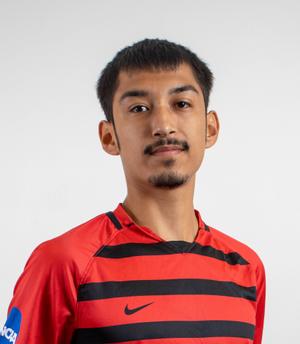Celebration of Scholars
#50: Match Demands of NCAA Division III Men’s Soccer
 Name:
Jhovany Guadarrama
Name:
Jhovany Guadarrama
Major: Exercise and Sports Science
Hometown: Northfield
Faculty Sponsor: Tony Pustina
Other Sponsors:
Type of research: Senior thesis
 Name:
Nick Washelesky
Name:
Nick Washelesky
Major: Exercise and Sports Science
Hometown: Northbrook
Faculty Sponsor: Tony Pustina
Other Sponsors:
Type of research: Senior thesis
Abstract
Match Demands of NCAA Division III Men’s Soccer
The purpose of this study was to compare the physical competition demands of defenders, midfielders, and attackers competing at the NCAA Division III level. The investigation utilized data from the men’s 2023 soccer season. Wearable GPS tracking devices were employed to measure various metrics such as total distance, high-speed running distance (>14.4 km/h) (HSR), and inertial load. The three playing positions: defender, midfielder, and attacker were compared.
Twenty Division III men's soccer players participated. The analysis included varying observations of defenders (n = 65), midfielders (n = 79), and attackers (n = 32). A mean playing time of 75.8 ± 17 minutes per match was recorded. Each player wore the same GPS device throughout the season, housed in a manufacturer-made harness.
A mixed linear model with repeated measures was used to assess position-by-time interactions for dependent variables: total distance, HSR distance, and inertial load. Significance was set at p = 0.05. Cohen's d was computed to determine practical meaningfulness, categorized as trivial (<0.2), little (0.2-0.6), moderate (0.6-1.2), large (1.2-2.0), or extremely large (2.0-2.4). Statistical analysis was conducted using the Statistical Package for the Social Sciences (SPSS).
For total distance, midfielders covered the most at 9460m, followed by defenders at 8898m and attackers at 8281m. Midfielders covered the most HSR distance at 2182m, forwards covered 1795, and defenders covered 1725m. For inertial load, midfielders had the highest values at 1415, followed by defenders at 948, and forwards at 670. These results indicate that midfielders perform more work than other positional groups. Therefore, training should be more extensive for these athletes.
Submit date: March 26, 2024, 3:44 p.m.
